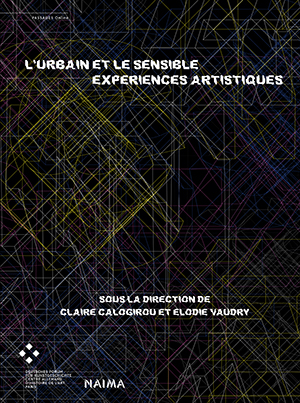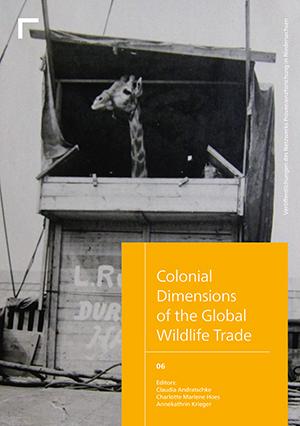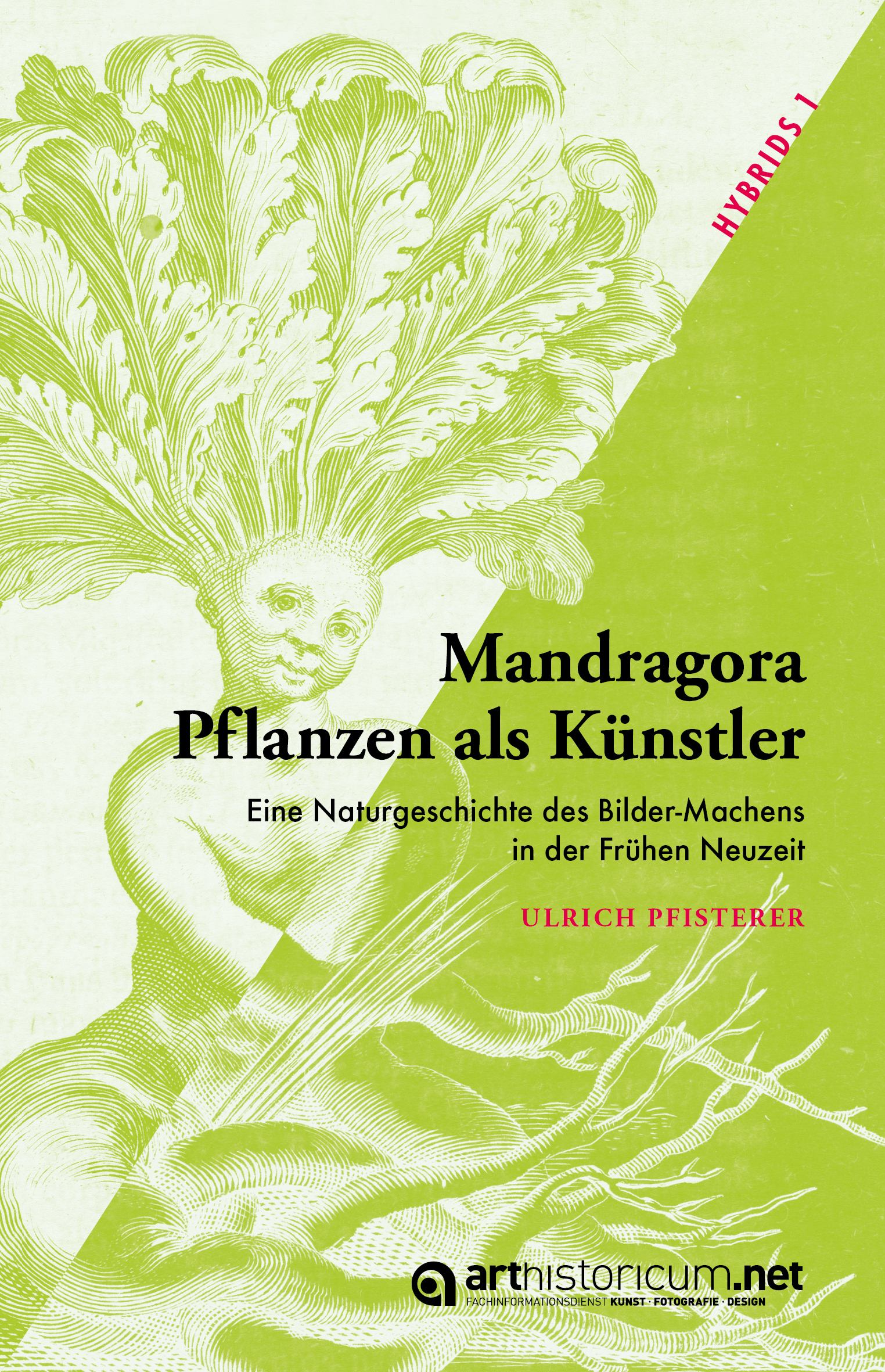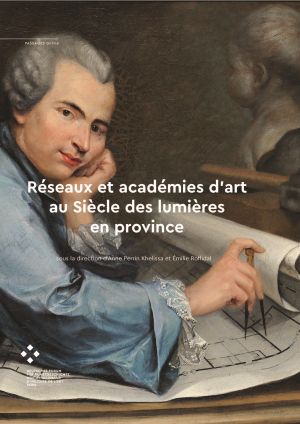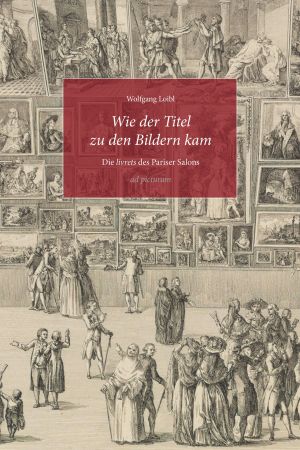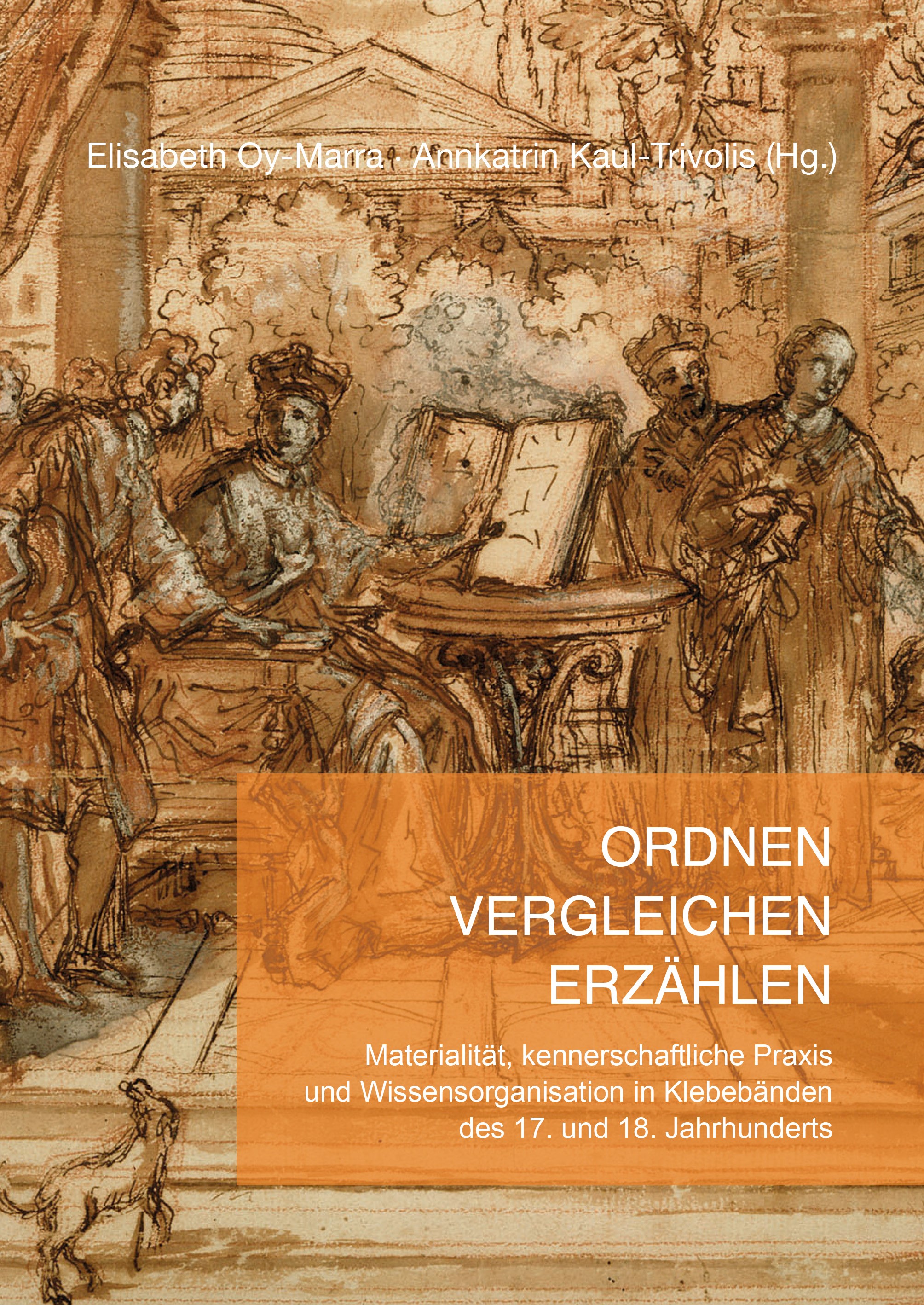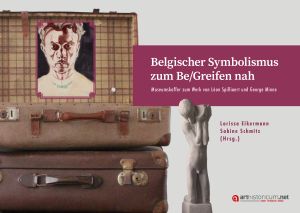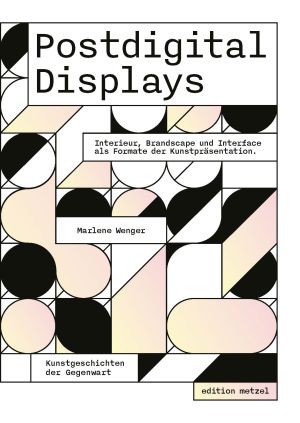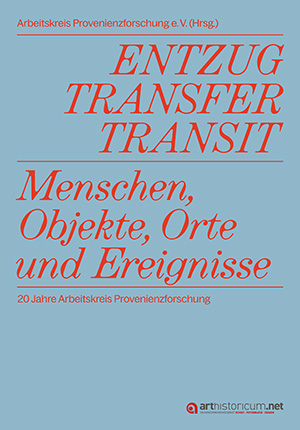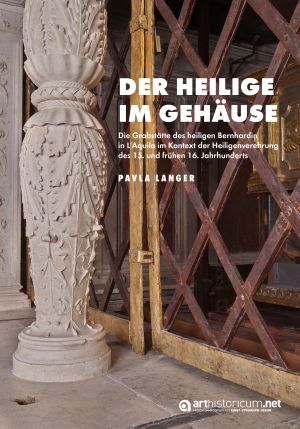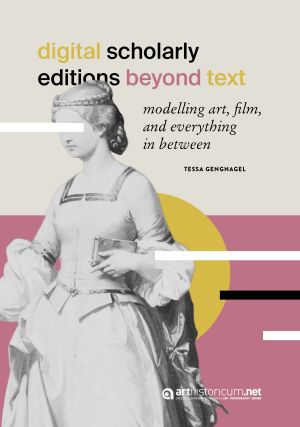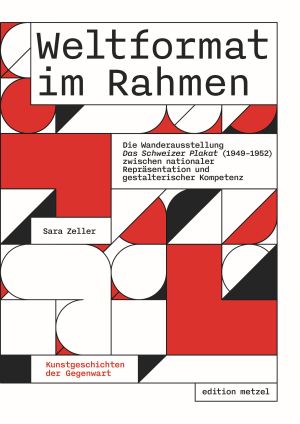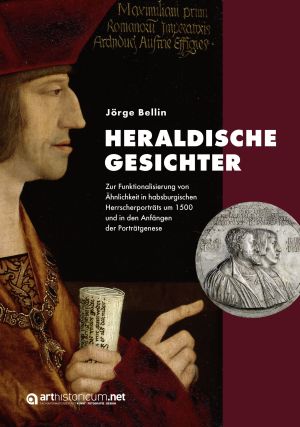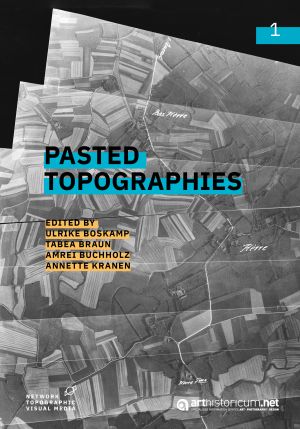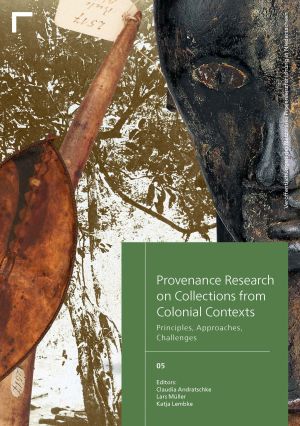Books
L’urbain et le sensible: Expériences artistiques
This book is the result of a fruitful exchange between scholarship holders and guests of the DFK Paris as part of the 2021-2022 annual theme ‘Street Art’. The authors gathered here with their contributions share an interest in aesthetic practices in urban space and its use. Their aim is to raise awareness of the ways in which the city can be appropriated through a gaze, a path or through writing, be it in a political, visual artistic, democratic, challenging, playful or multi-sensory form. One of the peculiarities of this relationship is the shared, pronounced sense of questions of emotionalisation and taste judgement. As a fundamental factor, the street lends its aesthetic dimension to such behaviour.
Cet ouvrage rassemble la somme des fructueux échanges menés par les boursiers et les invités du DFK Paris dans le cadre du sujet annuel 2021-2022 « Street Art ». Tous partagent un intérêt pour les pratiques et les usages sensibles de l’espace urbain – autrement dit, les manières de s’emparer de la ville par un regard, un parcours, des écrits, que ce soit par une forme politique, esthétique, démocratique, revendicative, ludique ou multisensorielle. L’une des particularités de ces pratiques est un sens aigu des émotions et des goûts partagés avec d’autres. Composante fondamentale, la rue leur confère une dimension esthétique.
Colonial Dimensions of the Global Wildlife Trade
This volume resulted from an international conference that took place in November 2022 at the Georg-August-Universität Göttingen. The aim was to examine the colonial dimensions of the global wildlife trade in the first half of the 20th century, and its connections to other forms of trade, e.g., with human remains, animal material or ethnographic objects. In particular, the papers scrutinise the legacy of this trade - in the regions of origin, but also in European and North American institutions.
The conference and the volume are linked to the project "The global networks of the animal trading companies Reiche and Ruhe - provenance research on the circulation of animals, humans and objects in the 19th and 20th centuries”, which is based at the Chair of Modern History at the University of Göttingen and is funded by the German Lost Art Foundation. It is conducted in cooperation with the Municipal Museum of Alfeld and the Network for Provenance Research in Lower Saxony.
Mandragora – Pflanzen als Künstler: Eine Naturgeschichte des Bilder-Machens in der Frühen Neuzeit
Plants produce images, nature is an artist. What reads like an avowal of contemporary eco-art was already a subject of intense interest in early modern times: after all, there are many forms in nature that are reminiscent of a human figure - such as the mandragora or mandrake root. Explanations ranged from superstition and speculation about divine messages hidden in creation to scientific theories. At the same time, the relationship between natural and artificial products and the conditions for precise observation were also considered. One highlight of these discussions was the publication of an anthropomorphic beetroot in 1670 in Germany's first scientific journal.
Réseaux et académies d'art au Siècle des lumières en province
Ce livre est le fruit des six années de recherche du programme ACA-RES sur Les académies d’art et leurs réseaux dans la France préindustrielle. Il explore le rôle des provinces dans l’élaboration d’une pratique moderne de l’art, entre apprentissage des règles du goût et réponse aux réalités sociales et culturelles des territoires. Il fait sortir de l’ombre artistes, amateurs, dessinateurs des manufactures, entrepreneurs, marchands, notables des villes qui, loin d’être tournés vers des cercles fermés, apparaissent en relation permanente avec le monde. Ainsi est-ce donc une histoire inédite des circulations des modèles artistiques qui se dessine ici, comme des multiples acteurs de l’art agissant pour sa révolution.
Wie der Titel zu den Bildern kam: Die livrets des Pariser Salons
For a long time, works of art with traditional pictorial motifs were sufficiently comprehensible even without titles. Why, when and under what circumstances were titles nevertheless created? The livrets - the exhibition cata logues of the Paris Acaddmie roya le de peinture et de sculpture - provide an answer to this question. Due to their long, continuous series of publications, the catalogues of the respective exhibition objects form an excellent source for the diachronic examination of the creation of titles.
The genesis of the titles shows a gradual transition from descriptions of the works to concise short titles: The emergence of new, previously unknown pictorial motifs, the development of the art market and the beginning of art criticism demanded and favoured short, easy-to-read titles that facilitated rapid identification of the content of the work as well as art-theoretical discourse on the artist and the work.
(Un)seen stories: Suchen, Sehen, Sichtbarmachen
The exhibition (Un)seen stories. Looking, Locating, Illuminating (Kupferstichkabinett, Berlin, 31.05. – 25.08.2024) shows hidden stories from the collections of the Staatliche Museen zu Berlin and the Musikinstrumenten-Museum Berlin. Curated by assistant curators from various institutes and collections, this exhibition initiates a dialog between objects and their narratives objects and their narratives revealing connections that are otherwise invisible. Their stories provoke opinions, attitudes and feelings and allow fresh perspectivesto the displayed objects.
Schaffende Hände: Medialisierungen von künstlerischer Arbeit
»Schaffende Hände« (creative hands) is a series of cultural films in which art historian Hans Cürlis portrayed artists at work from the 1920s onward. The documentaries promise to provide an undisguised view of the creation of paintings and sculptures, making visible what is hidden from view in the finished work. Taking this interest in "creation" as its starting point, this book spans the modern period to the present day. It is dedicated to the question of how artistic work is staged, documented and didactically presented, and how the role of the artist’s hand is determined by varying relationships between mental and manual labor.
Ordnen – Vergleichen – Erzählen: Materialität, kennerschaftliche Praxis und Wissensvermittlung in Klebebänden des 17. und 18. Jahrhunderts
At the beginning of the culture of collecting paper media, drawings were primarily kept in so-called adhesive volumes. Today, the surviving or reconstructable adhesive volumes are invaluable for the genesis of connoisseurial knowledge, as they bear witness to early modern collecting culture and its organisational systems. Organised according to artists, genres and schools, they provide insights into collection structures and historical concepts, which are illustrated by a deliberate selection of drawings and prints. The pages also lend themselves to juxtapositions and comparisons.
The essays collected in this volume examine the materiality, functions and potentials of this early modern medium for generating and communicating knowledge. They are based on the lectures presented at the conference Ordnen - Vergleichen - Erzählen. Die Materialität von Klebebänden und ihre Funktionen in der Frühen Neuzeit from 31 January to 1 February 2020 at the Graphische Sammlung Schloss Wilhelmshöhe (Hessen Kassel Heritage) as part of the DFG-funded research project Die Materialität der Wissensordnungen und die Episteme der Zeichnung. The Drawing Albums of Sebastiano Resta.
Museums Facing a Planetary Emergency: ICOM Germany annual conference together with ICOM Greece and ICOM Cyprus – held online on 14 November 2020
Our world is changing rapidly under the influence of human behaviour: climate change and biodiversity loss but also pandemics are just some of the most dramatic manifestations of global crises of unprecedented scope. As trusted sources of information and sites of transformative engagement, museums can and must play a role in addressing the most pressing issues of our times. How can museums respond to those crises, what new roles could our institutions play to strengthen the communities they serve? What is the role of our collections and how can they be protected from the dangers of global changes or local disasters? How should museums reinvent themselves in the face of a planetary emergency?
The F*word – Guerrilla Girls and feminist graphic design
The exhibition The F*word – Guerrilla Girls and Feminist Graphic Design draws attention to the stark underrepresentation of female designers in the Graphics and Poster Collection of the Museum für Kunst und Gewerbe Hamburg. Of all the works in the collection, only 1.5% were created by women. This publication brings together texts and installation views from the exhibition, providing insights into the root causes and status quo and documenting the first steps towards greater diversity through new acquisition strategies and exhibition practices.
The catalogue is published in German and English.
The F*word – Guerrilla Girls und feministisches Grafikdesign
The exhibition The F*word – Guerrilla Girls and Feminist Graphic Design draws attention to the stark underrepresentation of female designers in the Graphics and Poster Collection of the Museum für Kunst und Gewerbe Hamburg. Of all the works in the collection, only 1.5% were created by women. This publication brings together texts and installation views from the exhibition, providing insights into the root causes and status quo and documenting the first steps towards greater diversity through new acquisition strategies and exhibition practices.
The catalogue is published in German and English.
Opus magnum: Matthäus Merian d.Ä. und die Bebilderung der Alchemie
with the assistance of Thomas Hofmeier
With remarkable industry the publishers Johann Theodor de Bry and Lucas Jennis brought forth a great variety of printed books on practical and spiritual alchemy between 1615 and 1630. The emerging artist Matthäus Merian the Elder (1593–1650) was commissioned to illustrate nearly 20 of those publications. In close collaboration with publishers, authors and fellow artists, Merian managed to develop sophisticated, aesthetically appealing and iconic images without having had specific iconographic templates at hand. In this anthology, 16 international authors subject the famous corpus of the Frankfurt Alchemica illustrata to a comprehensive art and cultural-historical analysis.
Belgischer Symbolismus zum Be/Greifen nah: Museumskoffer zum Werk von Léon Spiliaert und George Minne
Belgian Symbolism has been rediscovered in recent decades. While artists such as Léon Spilliaert and George Minne were long an insiders’ tip, they now captivate a broad audience. Still, many works of this art movement are considered as attractive as they are difficult to access due to the sophisticated formal language, hidden meanings, and mystical visions that characterize them. The ˈMuseum Coffersˈ open up the possibility of discovering and understanding them in their cultural and art historical context. This is impressively demonstrated by the museum coffers presented here: they turn cultural learning into a holistic experience and open doors to new worlds.
Postdigital Displays: Interieur, Brandscape und Interface als Formate der Kunstpräsentation
Contemporary art can often hardly be distinguished from advertising - it is superficial and affirmative of the capitalist presentation of goods. The 9th Berlin Biennale 2016, "The Present in Drag", curated by the New York collective DIS, was confronted with this accusation. This book examines how post-internet art behaves in the exhibition space. The post-digital displays by Christopher Kulendran Thomas, Timur Si-Qin and Débora Delmar take center stage. The author claims that the quality of these works lies in their lack of distance from economic circulation systems, in the strategies of branding and in the reference to their spaces and surfaces.
ENTZUG, TRANSFER, TRANSIT: Menschen, Objekte, Orte und Ereignisse. 20 Jahre Arbeitskreis Provenienzforschung e.V.
The publication of the Arbeitskreis Provenienzforschung e. V. focuses on past debates, current developments and future perspectives of the research field. The contributions highlight specific seizure processes related to colonial contexts, the Nazi looting of cultural property or expropriations in the Soviet Occupation Zone and the GDR that are significant for the respective subject. Not least based on the history of the Arbeitskreis Provenienzforschung and its more than twenty years of activity, aspects of the historical and current handling of looted and stolen property are illuminated and critically examined in relation to the conflicting demands of cultural policy, the group's own scholarly aspirations, and the actual working practices of the researchers.
Der Heilige im Gehäuse: Die Grabstätte des heiligen Bernhardin in L’Aquila im Kontext der Heiligenverehrung des 15. und frühen 16. Jahrhunderts
The Franciscan preacher Bernardino of Siena (can. 1450) is one of the most important saints of the 15th century. His funerary monument in S. Bernardino, L'Aquila, is extraordinary in formal terms and at the same time an example of new visual strategies in saints’ cults at the beginning of the early modern period. in 1505 the free-standing and richly decorated mausoleum was designed by the Aquilano sculptor Silvestro di Giacomo. Its large openings give insight into the vaulted interior and the undivided saint’s body. This study analyses Bernardino's sepulchre and burial church comprehensively regarding their typological, devotional, civic and urbanistic significance.
Entre croyance aux miracle et iconoclasme: L’espace sacré en France au XVIIIe siècle
This conference volume examines the evidence, religious experiences and aesthetic transformations of sacred space in the Age of Enlightenment from an inter- and transdisciplinary perspective. To what extent should we understand the church in the 18th century not only as a sacred space, but also as a place that attracts believers and tourists, clergy and artists, nobles and citizens, men and women alike, and at the same time has a social, aesthetic and emotional dimension? How can we explain the fundamental secularisation and the dissolution of boundaries that affected the sacred space between the death of Louis XIV and the French Revolution? How is the question of the credibility of transcendence dealt with in the age of the emerging natural sciences, encyclopaedias and the progress of knowledge in art? Against the background of the confrontation between criticism of the church and absolutism, atheism, demystification of the religious and plausible reactualisation of the spiritual, (syn)aesthetic concepts of sacred spaces are of particular relevance. Not only integrated into art-theoretical discourses, they are a tangible expression of the continuous readjustment of Enlightenment society.
Digital Scholarly Editions Beyond Text: Modelling Art, Film, and Everything in Between
Scholarly editions contextualize our cultural heritage. Traditionally, methodologies from the field of scholarly editing are applied to works of literature, e.g. in order to trace their genesis or present their varied history of transmission. What do we make of the variance in other types of cultural heritage? How can we describe, record, and reproduce it systematically? From medieval to modern times, from image to audiovisual media, the book traces discourses across different disciplines in order to develop a conceptual model for scholarly editions on a broader scale. By doing so, it also delves into the theory and philosophy of the (digital) humanities as such.
Weltformat im Rahmen: Die Wanderausstellung Das Schweizer Plakat (1949–1952) zwischen nationaler Repräsentation und gestalterischer Kompetenz
The touring exhibition "The Swiss Poster" circulated through Europe and America between 1949 and 1952. As a cultural diplomatic manifestation, Pro Helvetia's poster exhibition fulfilled a strategic function by conveying national values through design at a time when the political world order was being reshaped. Simultaneously, the exhibition made a significant contribution toward stylizing and establishing the now UNESCO-recognized label of Swiss graphic design, which had previously been ignored in the historiography of the discipline.
Heraldische Gesichter: Zur Funktionalisierung von Ähnlichkeit in habsburgischen Herrscherporträts um 1500 und in den Anfängen der Porträtgenese
For Jakob Burckhardt, "the question: to what extent portrait? to what extent ideal? [...] was one of the most graceful questions in Italian art history". It is indeed not only a central problem of Italian, but of the entire European history of portraiture and its research. Especially with regard to portraits of rulers, the aspect of physiognomic resemblance was marginalized again and again, despite its crucial significance to the concept and subject of the portrait, and the "individual" took a back seat to "type," "ideal," and "higher conception". The present study counters this with an interpretive model based on the concept of similitudo, which conceives the post-ancient 'rediscovery' of similarity as an effective and significant factor in political semiotics.
Pasted Topographies
The joining of individual images or the mounting of papers to form larger sheets can be understood as material responses to the challenges of representing topographies. The combination of topographic images in composite media – albums, travelogues, atlases or picture series coupled with maps – enables complex representations as well as contextualised perceptions of space. This volume brings together case studies in which techniques of gluing and pasting prove essential for the rendering of space in visual media.
Provenance Research on Collections from Colonial Contexts: Principles, Approaches, Challenges
This volume compiles the contributions at the International Conference of the same name, which was held at Leibniz University Hanover in June 2021. The conference was planned by the collaborative project "Provenance Research on Non-European Collections and Ethnology in Lower Saxony" (PAESE), coordinated at the State Museum Hanover. The aim was to bring together actors from different perspectives to discuss questions, methods and (preliminary) results in the field of provenance research on collections from colonial contexts.
Materialität im Kontext: Studien zur Kunsttechnik spätmittelalterlicher Tafelmalerei aus Bayern, Österreich und Südtirol am Germanischen Nationalmuseum. Ausgewählte Ergebnisse des kunsttechnologischen Forschungsprojektes
Technologische Kartierungen und Umzeichnungen von Josefine Kramer
Since 2013, the Germanisches Nationalmuseum in Nuremberg has been researching its extensive collection of late medieval panel paintings in an exemplary manner. Between 2019 and 2022, the 26 panels from Bavaria (Altbayern), Austria and South Tyrol were the focus of an exclusively art-technologically oriented research project at the Institut für Kunsttechnik und Konservierung as part of the BMBF-funded programme "Rare Disciplines – Great Potencials". The publication, which marks the conclusion of the research project "Materiality in Context", offers a summary of selected results of the project, embedded in the context of current research. The richly illustrated publication is published open access in both PDF and HTML format, thus opening up new avenues in terms of image quality and content networking.
Banksy: The Early Shows. 1997-2005
„The Early Shows" traces Banksy's early artistic development from tagger and music graphic designer to stencil street artist. The now-prominent Banksy rose to worldwide fame around 2006. After that, he created his works before the eyes of the world. Rather obscure are still is exhibitions before 2003, when he had his UK breakthrough with the self-organized retrospective Turf War and his album cover design for BritPop band Blur. This survey, edited by Banksy expert Ulrich Blanché, covers early Banksy shows and events 1992 until 2005. It aims to be an academic counterpart to Banksy’s artist book Wall and Piece (2005), which focused mainly on his illegal street works until then.
Das Sehbare und das Unsehbare: Teil 3: Abenteuer der Bildanschauung – Caravaggios Enthauptungen des Johannes
This book is a pleading for the intensive contemplation of paintings. With the analyses presented here, we dive into the immensely multifaceted pictorial world of Caravaggio's work.
An adventure that is also a particularly tempting venture because it is a matter of becoming completely involved in one's own aesthetic experience. That means, it is only in the concrete visual perception that we encounter the inner meaning of the intrinsically significant pictorial phenomena in the works. In other words: "We see the value" of painting, as Art historian Theodor Hetzer once euphorically and pathetically formulated, "in the magic of its possibilities".
Readers are invited on a special phenomenological journey through magnificent pictorial landscapes of the early modern period. The focus of interest here is Caravaggio's pictorial solution in connection with the beheading of John the Babtist.



